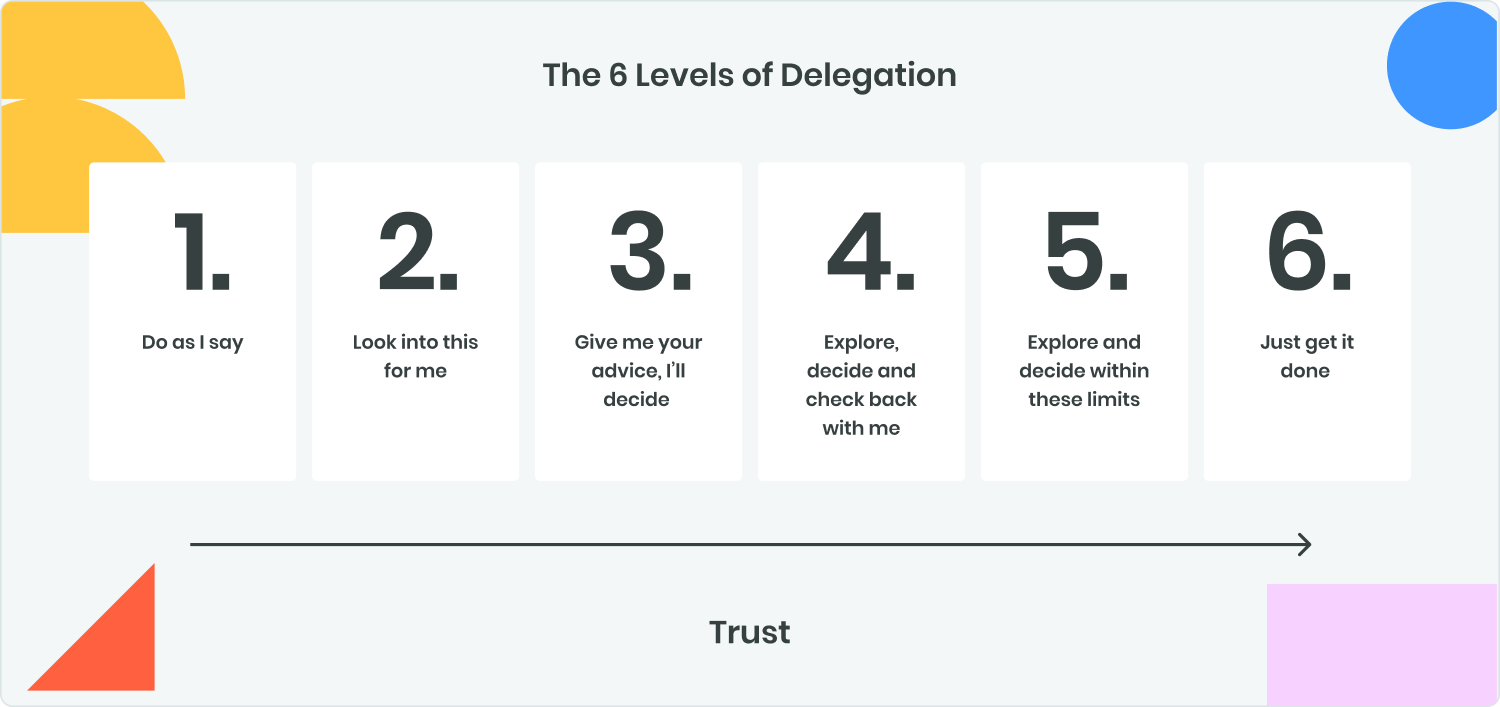
Inherited a Freelancer? Here Are 12 Tips to Unlock Hidden Potential in Your Talent


12 tips based on my own experience managing hundreds of freelancer projects with agencies, media publishers, nonprofits and startups.
You started an exciting new role. As is the case with most fast-moving teams, onboarding is like jumping off a cliff and building the plane on the way down. One challenge that pops up during this new adventure is inheriting existing contractor relationships, and making the most of these resources.
How do you kindle a positive relationship with inherited freelancers, as the new resource manager? This moment can make or break the quality of the deliverables. It’s also a leadership opportunity to inject new energy, and unlock potential in your creative talent.
In this article, I’ll detail some tips I’ve learned when joining a new company and re-engaging existing freelancers. Over the past 14 years, these best practices resulted in high-quality creative work and long-term growth — for the freelancer, the company, and my own professional development.
1. Meet face to face asap.
As soon as you know you’re “inheriting” an existing freelancer, get to know them personally. Jump on a Zoom call to build rapport. This first call should be 70% getting to know each other, learning their interests and strengths, and only 30% about the work. Ask them what they are most excited about. What project are they most proud of producing?
Tease some exciting ideas you have coming up, but keep it high level on the work front. This is not a project kickoff. The goal here is to start a positive relationship, as you’ll be working together from here on!
2. Establish your credibility.
Why should this freelancer listen to you? Remember they probably know nothing about your background, other than that you’re “the client.” Establishing that you have X years experience in content management or digital marketing or video production, for example, sets the tone that you can walk the walk and will be able to talk the talk when working together.
Plus, this avoids the risk of misunderstandings and tension down the line. If one person (on either side) assumes a lack of knowledge in a particular area, this may cause an incorrect and ineffective style of delegation.

3. Consider the 6 levels of delegation.
Which level are they? Does this particular contractor need more handholding and guidance? Or can they operate with full autonomy and trust, and a simple brief?
Delegation style can make or break a freelance relationship. It’s worth noting, a long-term contractor can level-up across this spectrum of trust and autonomy. But it’s important to understand upfront how you’ll delegate tasks, so you don’t burn a bridge or cause unnecessary friction.
4. Ask them how they prefer to collaborate.
How will you actually work together with this freelancer? See if they have any preferred templates they like to use for assignment briefing. Should you schedule a biweekly check-in? Or will the timezone difference lend itself to a more asynchronous style of communication?
Get the freelancer’s honest feedback on what your organization could improve, in terms of how you’ll assign future work. Especially when hiring remote contractors, it’s critical to establish a smooth collaboration process and centralized tool. Ideally, use a freelance management system like Worksuite to keep freelance tasks and projects organized, and tied cleanly to invoicing and payments.
5. Set expectations with freelancers.
Share what’s to come, and a few ideas about how things are going to change for the better. What are your high level plans for growing the program / department? Make it feel like a GOOD change. Not simply a rotation of a different client stakeholder. Remember, they are used to dealing with a certain person and may be worried that their work relationship is at risk. Also set expectations around timing for upcoming projects — especially if you anticipate a pause while you get your strategic footing in the new role.
6. Encourage training & self-development.
Engaging freelancers isn’t technically the same as hiring employees, so the usual HR benefits and perks don’t typically apply (e.g. education stipend). That said, if you see a spark in your freelancer and would like to unlock more creative potential, really think about how you can provide education and resources to expand their skillset.
This could be as easy as sharing a login to an online course, or encouraging them to upskill in something they’re passionate about. Tell them you’d love to be able to give them more hours on a consistent basis, if they were to upskill in X.
For example, a video editor might have a particular flair for typography, and you could encourage them to learn motion design software — making them even more valuable of a creative collaborator.
By nurturing your talent — regardless of full-time or freelance status — you’ll build a reliable network of go-to resources who have a vested interest in doing great work for you.
7. Check your tone.
Some people coming into a new role managing freelancers may assume a certain hierarchy with a style of “do as I say” management, which can quickly spiral into micromanagement.
Instead, think of your contingent workforce role as leading over managing. Servant leadership doesn’t stop with full-time employees. You can apply this philosophy to how you manage contractors, too.
- Don’t say: “I wish you would do it better / I need you to hit this goal.”
- Do say: “How can I help support you in hitting targets? What resources do you need to succeed?”
- Don’t say: “Make it pop.”
- Do say: “Could I ask you to please revisit this design, with XYZ feedback in mind?”
- Don’t say: “I don’t like this page you wrote. Can you do X instead.”
- Do say: “I found this example that I really like that seems to perform well. What do you think about incorporating something like this on our channels?”
Remember, your company engaged this contractor because they’re a specialist. They are providing you a service. They may even be more senior than you. Show respect, and always communicate in a polite way.
Lastly, a simple “thank you” at the end of the day goes a long way!
Jack Welch, former CEO, General Electric Before you become a leader, success is all about growing yourself. After you become a leader, success is about growing others.”
8. Give more feedback in the beginning.
This is your opportunity to course-correct anything that seems like it’s just “going through the motions.” Maybe there was little oversight before, and the contractor was coasting on certain things. Perhaps this wasn’t on them. Could it have been a lack of feedback and accountability on the management side?
By devoting time to giving more feedback upfront, you’ll establish preferences and get into a groove of collaboration. Pretty soon, the freelancer will be able to read your mind. Likewise, ask for honesty from them, to keep you pushing the creative envelope.
9. Check internally on their arrangement, terms, and scope.
Speak with your team and review the contractor agreement, or at least the general terms of their work arrangement. How is your company currently engaging with this freelancer? How many hours a week or month can you ask for? What do they charge per article, per hour, or per month?
Again if you’re using Worksuite, this should all be accessible in their Talent Profile already. However, it’s worth it to ping your team and check on what the current arrangement looks like, to avoid any scope creep or extra costs.
10. Ask for your contractor’s availability.
This is a common mistake when resource managers assume that “hired guns” are always on standby waiting for the next project. Don’t forget: You are just one of many clients. Your freelance talent may have a busy month coming up that directly conflicts with a project you have in mind.
With Worksuite, you can 1-click ask for a freelancer’s availability, and see up to 12 weeks into the future right from your Talent Directory. You can also incorporate this into your kickoff meeting, to get a general sense of their availability and rates.
11. Set up a smooth process for communicating, assigning tasks and paying invoices.
Get them set up in your freelancer management system. If you’re not already using Worksuite, it’s a proven FMS with 350,000+ users and some of the world’s top brands including Disney, Vox Media, IPG, Skyscanner and The Home Depot.
12. Inspire your freelancers!
Managing freelancers is a lot like any kind of management or leadership. Even though they are technically self-employed, it’s on you to get your talent fired up. Keep them inspired about new ideas and making the creative work better.
Clue them in on your big vision for the year ahead. Share swipes, inspiration, creative references, or a moodboard. Even just a friendly “I thought you’d appreciate this video” can go a long way. All of these things not only help increase the quality of the deliverables — they also foster a fruitful partnership for the long term.
Managing inherited freelancers the right way
Remember, just as you’re inheriting existing talent, they are inheriting a new client. The initial awkwardness goes both ways.
Use these tips to kick off your freelancer relationship in a productive way, and build a path together toward delivering even more amazing work.
If you need any help setting up a centralized freelancer management system to streamline your creative operations, reach out to us anytime.






